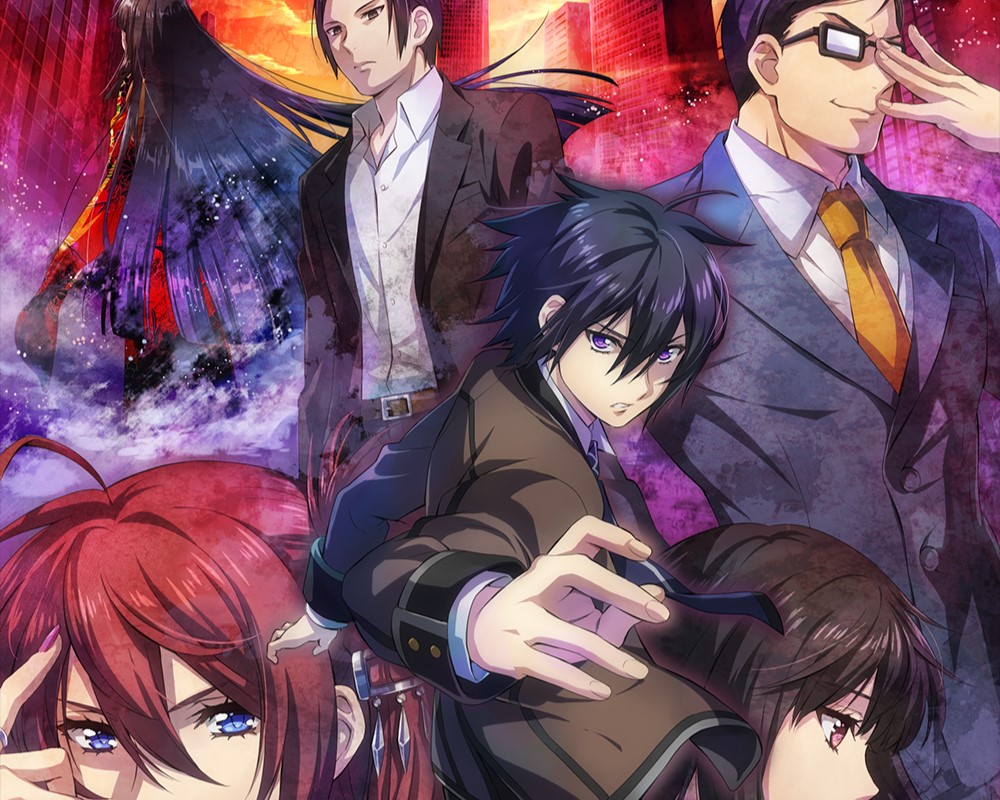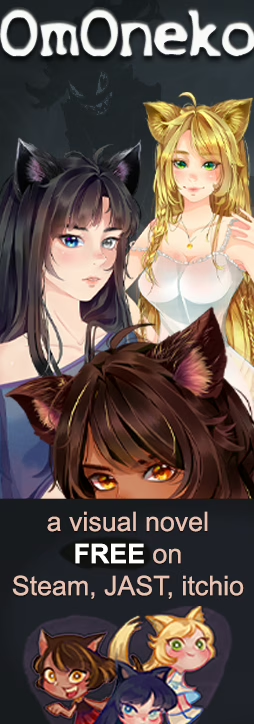Magical Eyes – Red is for anguish originally released in Japan in June 2014 by developer Pomera Studios. It was later localized to English in March 2016 by Fruitbat Factory. Although this is mostly a kinetic visual novel, there are instances where the game deviates from it (but I’ll touch on that later on).
You can buy it on Steam ($14.99), Itchio ($13.99), JAST ($13.49), and MangaGamer ($14.99).
Warning:
The following section discusses the story of this game and hence contains spoilers. Approach with caution. You have been warned.

The game starts immediately with a shadowgraph play, taking place in a time long gone… We follow a young girl, who is loved and cared for by everyone at a certain village.
One day, however, the girl transform into a terrible beast, ravaging the entire village. Despite the girl’s mind being full of sorrow and wishing to stop the destruction, her limbs will not stop being manipulated and so, she continues this senseless murder.
As in your typical fairy tale, a knight eventually saves her and turns her back to normal. However, it’s not just one, but two mysterious knight-esque men.
Fast forward to today…
High school student Amakawa Yuu and others are investigating a bizarre case. They are known as the “Disobeyers” for their abilities to go against the laws of nature, and are part of an organization. A knick-knack shop owner lost one of his arms and claims that was the work of a doll… As the Disobeyers gather information about the strange doll, they realize that this is just the tip of the iceberg. This doll has a long history of making their owners and people related to them disappear, and it has lasted for a century.
It’s not just mystery and thrilling adventures, no! There are also instances of slice-of-life and a bit of comedy with Yuu’s classmate Chiharu (who is also crushing on him!) as well as Yuu’s siblings. They are essential for a break from all the death and bizarreness we encounter.

Let’s start with the background visuals.

The background graphics are not so great, compared to other aspects of the game. The developers of this game seem to have used 3D modeling methods to create these background visuals… While this is a very flexible and easy method, the quality is just not great.
One problem that sticks out to me is the very inconsistent lighting, which is a staple of a lot of other background graphics. Though in other instances, especially in fight scenes, the variety of angles are always welcome.

The characters’ personalities in this game are distinguishable and well-written. You can feel and read how they have their own lives, instead of just being an archetype or suffering from same-face syndrome.
The character graphics, are alright, though the style make them feel a little dated. To be fair, I am playing this about 9 years later from when it was released, so what do I know?
The background soundtrack was excellent, featuring unique music for certain locations and characters, as well as blazing hot fight tracks! …Sadly, those are often underused.
I would also like to give kudos to Fruitbat Factory for their localization effort. Aside from a few typos, the localization is, personally speaking, of great quality.

This visual novel has some additional features, and one of them is the “map system.”

As soon as a scenario ends, the player will come back to this map and pick another one to move the story forward. In this game, you can choose three locations, though these scenarios locations differ depending on the character we’re playing as and what’s happening around us. The map also informs you if there are other scenarios in other locations, so don’t worry!
There is also a progress screen.

As scenarios go on, circles appear on their respective “side” and on their respective time frame in which the event occurred. When you place your cursor over a circle, a quick summary of the scenario is shown on the bottom. It’s pretty useful if you have forgotten a few details about what happened. This updates as we progress into the next day, so a new empty page is added.
Just like any fantasy visual novel, there are usually various unusual terminologies used that some players aren’t familiar with. Thankfully, the Magipedia is accessible in the index tab of the menu which contain definitions of such terms as they appear.
It is very typical for some players to start paying less attention to details as they keep playing through the game. However, to avoid this, at the end of each day, the game will will go to “Reasoning Mode”, where Yuu attempts to piece together the situation based on key points that are gained from investigating and talking to people. Most questions are related to the case and they can be answered using the key points that have been gathered. Correct answers unlock bonus content and additional scenarios, so make sure you pay attention!


Personally, a big issue I had with the game is that the stories leave quite a few questions up to the reader to “answer”. For instance, there is seemingly no connection between the main plot and the first part of the prologue — where a young man rushes to a hospital to meet a girl — which raises questions on how they would be relevant enough to put into the game.
And that brings yet another issue: to this day, there isn’t news of a sequel. It’s been almost a decade since the game originally released, so I can only hope at this point…
It is quite ironic to finish the game and find that not only there’s an implied sequel, but we even get a confirmed name.
This honestly reminds me a lot of those great animes that simply don’t get a sequel due to the studios falling apart or remaining stagnant. Pomera Studios is definitely the latter. Their last activity was in March 2020. I keep on hoping…


This concludes my review of Magical Eyes – Red is for anguish. I hope you found this and interesting and useful read!
Over time, some people have written this VN off as mediocre, waste of time, and many more. However, I am going to have to disagree. Even though its limitations are apparent, even though there is a lack of sequel… I still have to say this visual novel was an awesome experience for its time and it still holds up to today.
Thank you for reading!
You can buy the game on Steam, Itchio, JAST, and MangaGamer.
If you enjoy our work, please follow us on Twitter for more and join the community in our forums!
In addition, you can also support us on Patreon or by paying us a coffee.












